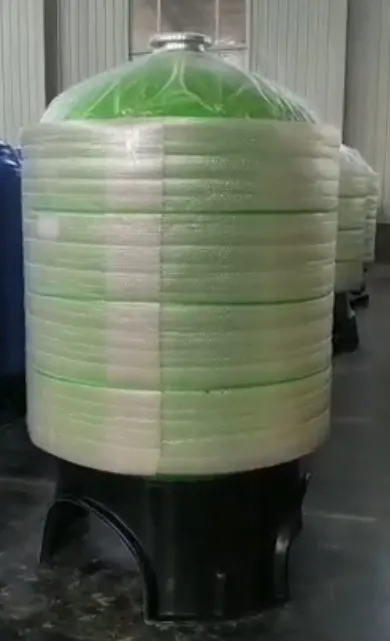loading...
- No. 9, Xingyuan South Street, Dongwaihuan Road, Zaoqiang County, Hengshui, Hebei, China
- admin@zjcomposites.com
- +86 15097380338
- Welcome to visit our website!
frp piles
The Advantages of FRP Piles in Modern Construction
In the realm of modern construction, the quest for materials that offer both durability and sustainability has led to the introduction of Fiber Reinforced Polymer (FRP) piles. These innovative structures are revolutionizing the way we approach foundations in various civil engineering projects, ranging from bridges to high-rise buildings. This article will explore the composition, benefits, and applications of FRP piles, underscoring their significance in contemporary construction.
Understanding FRP Piles
Fiber Reinforced Polymers (FRP) are composite materials made by combining a polymer matrix with fiber reinforcements, typically glass, carbon, or aramid. This combination results in a lightweight yet highly durable material that excels in strength-to-weight ratio and corrosion resistance. FRP piles, therefore, are structural elements designed for deep foundations and support systems, offering an effective solution to withstand various environmental challenges.
Benefits of FRP Piles
1. Corrosion Resistance One of the most significant advantages of FRP piles is their exceptional resistance to corrosion. Unlike traditional steel piles that can degrade over time due to moisture, salts, and other corrosive elements, FRP piles maintain their integrity in harsh environments, such as marine settings or areas with high soil salinity. This translates to a longer lifespan and reduced maintenance costs, thereby offering savings for construction projects over time.
2. Lightweight The lightweight nature of FRP piles makes them easier to handle and transport, requiring less heavy machinery for installation. This can reduce labor costs and construction time, providing project managers with more flexibility in planning and execution.
3. High Strength-to-Weight Ratio FRP piles boast a remarkable strength-to-weight ratio, meaning they provide excellent support while being significantly lighter than traditional materials. This allows for innovative designs and structures that may have been previously unfeasible, enabling architects and engineers to explore more ambitious projects.
frp piles

4. Sustainability As the construction industry shifts toward more sustainable practices, FRP piles offer a green solution. They are often made from recycled materials and can be fully recyclable at the end of their lifespan. This not only reduces waste but also minimizes the carbon footprint associated with traditional material production.
5. Versatility FRP piles can be tailored to meet specific project requirements, including custom shapes, sizes, and mechanical properties. This versatility allows them to adapt to a variety of soil conditions and load-bearing needs, making them suitable for diverse applications.
Applications of FRP Piles
The scope of applications for FRP piles is vast. They are ideal for use in
- Marine Structures Due to their corrosion resistance, FRP piles are perfect for docks, piers, and seawalls, where exposure to saltwater is a significant concern. - Bridges FRP piles can be used for bridge foundations, providing long-lasting support with minimal maintenance. - Buildings In urban development, FRP piles are becoming increasingly popular for high-rise buildings, offering significant support with the added benefit of lighter loads on the surrounding soil. - Environmental Protection FRP piles are also utilized in environmentally sensitive areas to build structures that minimize ecological disruption, such as in wetland restoration projects.
Conclusion
In conclusion, FRP piles represent a significant advancement in foundation technology, offering numerous advantages over conventional materials. Their resistance to corrosion, lightweight nature, high strength-to-weight ratio, sustainability, and versatility make them an ideal choice for a wide range of construction applications. As the industry continues to evolve and prioritize sustainable practices, the adoption of FRP piles is likely to increase, shaping the future of civil engineering. Builders and architects are encouraged to consider these innovative materials in their upcoming projects, paving the way for safer, more durable, and environmentally friendly infrastructure.
By integrating FRP piles into the construction landscape, we take a significant step toward a more resilient future.
-
The Rise of FRP Profiles: Strong, Lightweight, and Built to LastNewsJul.14,2025
-
SMC Panel Tanks: A Modern Water Storage Solution for All EnvironmentsNewsJul.14,2025
-
GRP Grating: A Modern Solution for Safe and Durable Access SystemsNewsJul.14,2025
-
Galvanized Steel Water Tanks: Durable, Reliable, and Ready for UseNewsJul.14,2025
-
FRP Mini Mesh Grating: The Safer, Smarter Flooring SolutionNewsJul.14,2025
-
Exploring FRP Vessels: Durable Solutions for Modern Fluid HandlingNewsJul.14,2025
-
GRP Structures: The Future of Lightweight, High-Performance EngineeringNewsJun.20,2025
